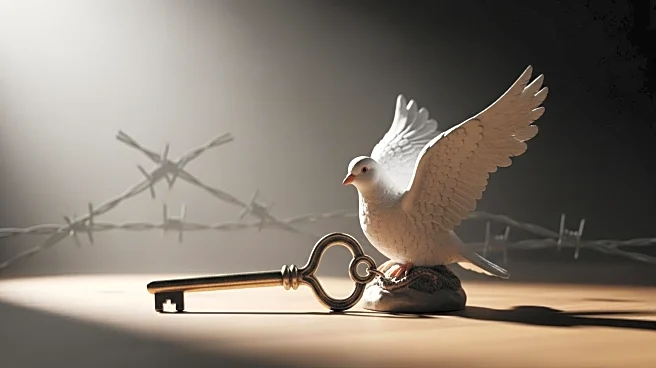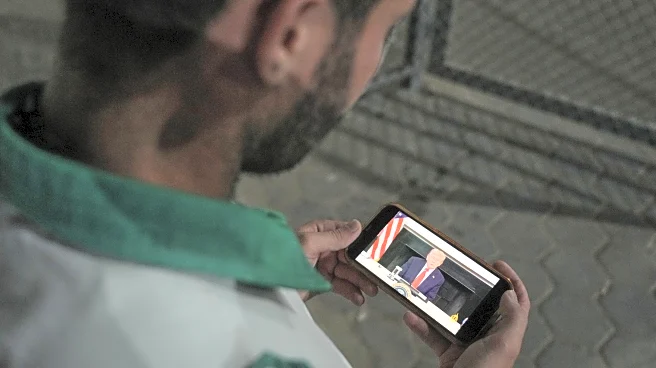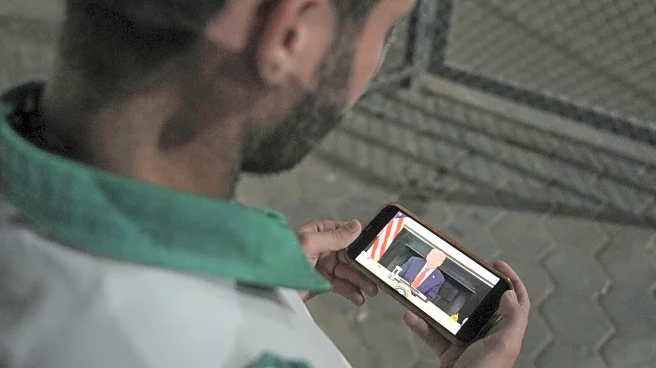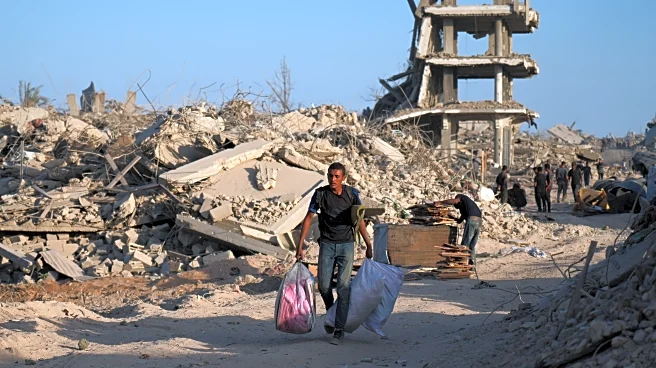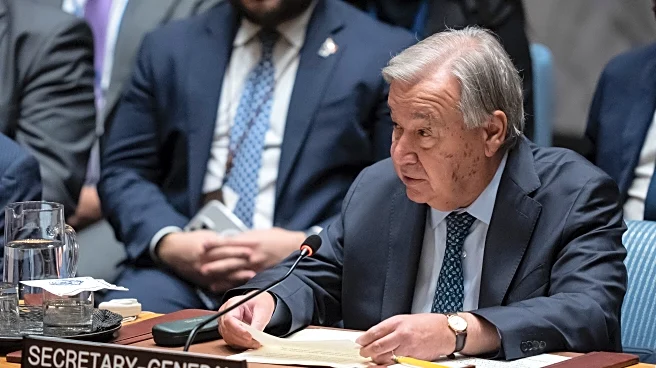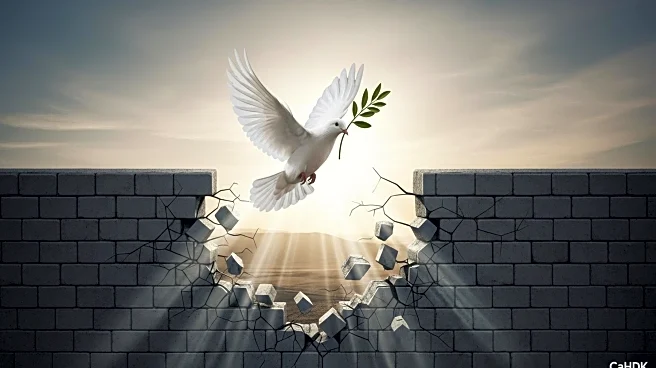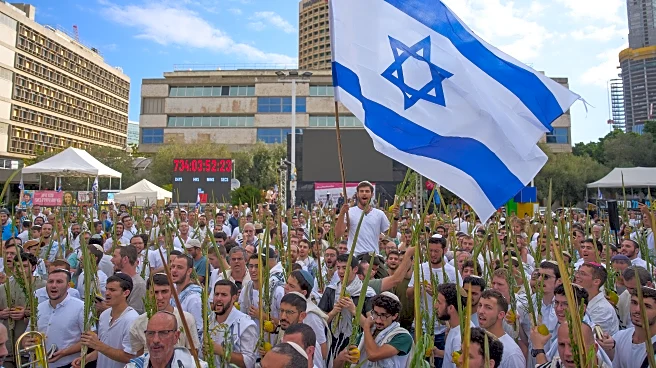What's Happening?
Under President Trump's ceasefire plan, Hamas is set to release the last remaining hostages in Gaza. Israeli forces have withdrawn from parts of Gaza, initiating the first phase of the truce. Hamas has 72 hours to release all hostages, while Israel will free around 2,000 Palestinian prisoners. The ceasefire has led to a massive movement of people in Gaza, with residents assessing damage and reclaiming their lives after two years of war. The truce has halted Israeli bombardments, allowing people to find shelter and clear rubble. Aid through the U.N. is expected to surge into Gaza, providing food, shelters, and medical supplies.
Why It's Important?
The ceasefire and exchange are crucial in ending prolonged hostilities between Israel and Hamas. The agreement, facilitated by President Trump, has brought hope and cautious optimism to both sides. The truce allows for humanitarian aid to address critical needs in Gaza, improving living conditions for its residents. The deal underscores the importance of international diplomacy in resolving conflicts and highlights the potential for further peace negotiations. The successful implementation of the exchange could lead to long-term stability and improved relations between the parties involved.
What's Next?
Challenges remain in disarming Hamas and establishing governance in Gaza post-exchange. President Trump's plan includes an international board of peace to oversee Gaza, but Hamas has rejected foreign oversight, emphasizing Palestinian governance. The situation is delicate, with Israeli Prime Minister Benjamin Netanyahu warning of resumed military action if Hamas does not disarm. The future governance of Gaza and the disarmament process will be critical in maintaining peace and preventing further conflict.
